Cashmere is practically an investment. Be it the luxury shawls and scarves that are crafted out of this fine wool type, or apparel that are designed using it, everything is precious and pricey. For this reason, it is often asked if these belongings will last for a while. After all, spending thousands of dollars for a single piece of shawl, or sweater and then watching it getting damaged or spoiled is not what one would wish for. Hence, this is a serious apprehension of any Cashmere user and owner and all they want to know is how long these shawls/scarves last.
What is Cashmere?
While many know each and every bit about Cashmere, there are still a few who practically have no knowledge about this luxury fibre. For those, we have just prepared a detailed writeup, which will educate them about what Cashmere is, why it is expensive, and why women and men want it to last for many years to come.
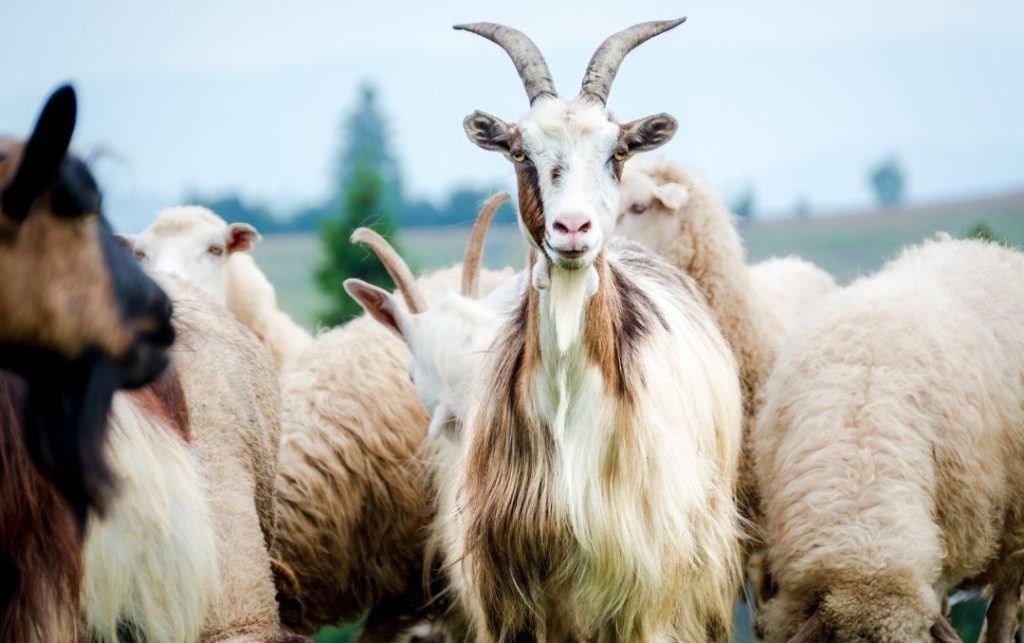
Cashmere is an animal hair type that grows as a down fibre on the body of a Cashmere goat. These goats are found around the Himalayas, in Asia. As such, the production of products made from this fine wool is obvious in countries around the Himalayan range. Even though China is the largest producer of Cashmere, the best and the finest quality Cashmere comes from Ladakh, North India.
The Himalayas are home to an exotic goat species called the Cashmere goat. These goats are the animals which are reared by the Nomadic population of these areas. The goats grow fine-quality wool in the winter season. The wool grows over their underbellies, ears, neck and other parts of the body. It is a defence mechanism to cope with the extreme temperature that the area experiences. In Ladakh, for example, the temperature dips to -40 degrees C. It is the Cashmere wool that helps these goats survive.
Also read: THE TRAIL OF INDIA’S CASHMERE GOAT MEN
Procuring Cashmere from the goat
As soon as summer arrives, the goats begin feeling uncomfortably warm. They, as a result, rub their bodies against grainy walls, coarse stones and rough bushes. This leaves traces of the Cashmere wool over these surfaces. As the herders notice a change in their temperament, they immediately call for professional help.
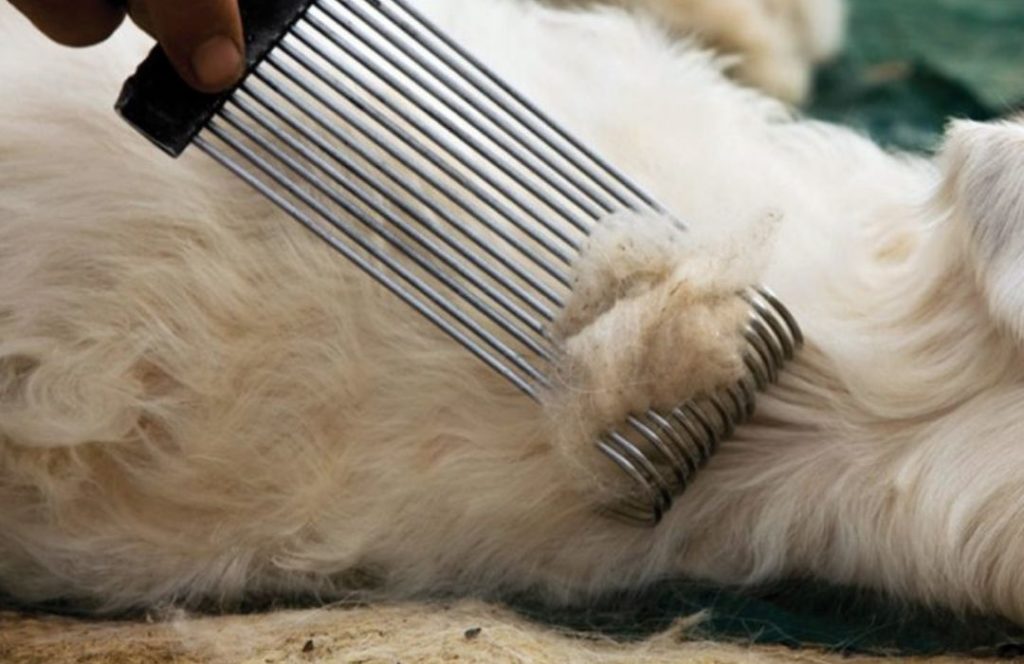
Professionals arrive with suitable tools and with ethical techniques and methods, the wool is gently combed off their bodies. The goats are set free and the acquired wool is packed in small pouches to be sent for processing
Processing the finest wool - The Art of Pashmina
Perhaps the reason why this exquisite wool type is so expensive is the processing. Processing of fine Cashmere to make luxury shawls and scarves is an art known as the art of Pashmina. It takes days to months to even years to prepare one single large shawl (if it is more detailed). Hence products like these are difficult to lose to any damage.
The processing of Cashmere starts when it is acquired from the goat. After collecting the fine wool from the goat it is sent for processing. Processing is manual, which starts with the spinning of the fibre. Before spinning, the wool is cleaned, which again takes 2-3 days. Spinning needs clean fibre, as it will convert these lumps of wool into fine threads. Spinning is done using a wooden spinning wheel. With the perfect synchronisation of hands and the movement of the wheel, the wool gets converted to fine fibre which is roughly 12 to 16 microns in diameter. The fibre is ready to be handwoven now
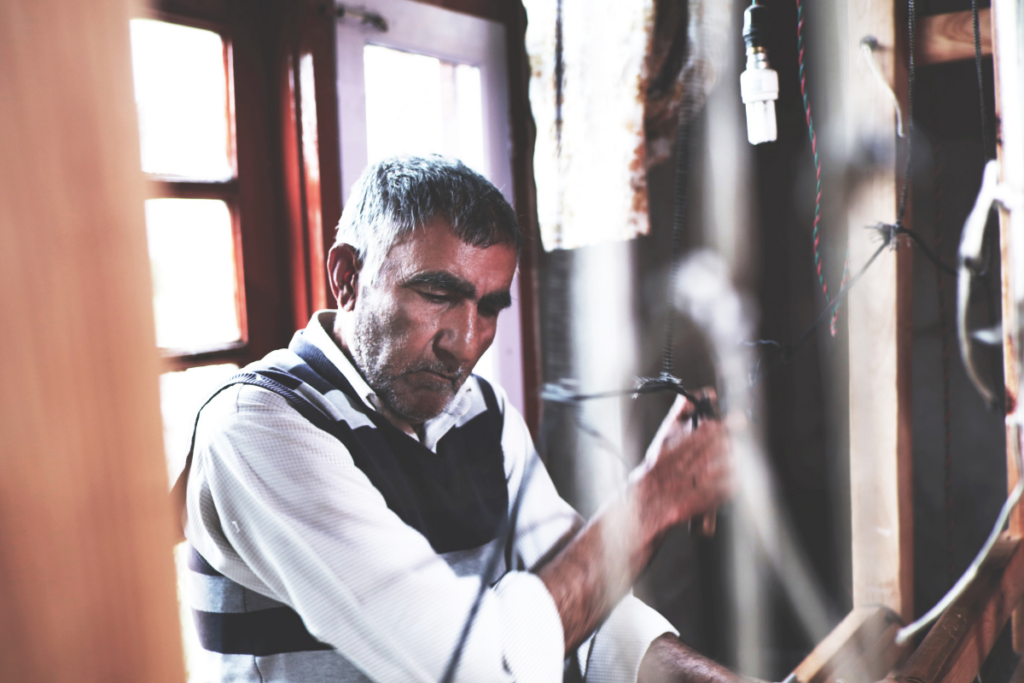
Weaving again takes place manually because such fine fibre will never be able to bear the stress and strain of the machine. Hence one or two men sit over a handloom and start weaving the spun fibre. This takes a few days, post which a beautiful product is ready. This might be a shawl, a scarf, a wrap or simply fabric to be further processed.
At times, a much more detailed Cashmere scarf or wrap takes 4 to 5 years to complete. This is the case with hand-embroidered shawls, Kani Pashmina shawls made from pure Cashmere, and many more accessories and outfits. For this reason, Cashmere is one of the most sought-after fibre types in the world.
Why is Cashmere expensive?
People won't be much amazed when they learn that one Cashmere scarf is worth a few thousand dollars. By virtue of its processing and the exclusivity of the Cashmere fibre, fine wool is well-deservingly expensive. Here are some more reasons why Cashmere products are expensive:
- The acquisition of Cashmere wool is a challenge. One has to wait for an entire season to acquire it, and the process to is lengthy and complicated. One has to take care of the animal properly lest it gets hurt.
- The Cashmere goat grows only 150 grams (on average) of wool per season, which isn't even enough for one full-length wrap. Hence, it takes wool from 2 to 3 goats to make one shawl. This makes these products exclusively luxurious.
- Makers of Cashmere wraps and outfits often have to wait a year to get just a few ounces of the fine wool. For this reason, there is fair competition amongst the makers as supply is way less than demand.
- The processing of Cashmere is time-consuming as well as rightfully hard work. From spinning, weaving, and embroidery or patterning, the products made from it do not come out of the factories before a few months. Later, if these are to be further patterned, more time is spent, and hence, once again, demand outgrows the meagre supply.
- Cashmere wraps and shawls are super fine, owing to the fibre being just 12 to 16 microns. These are fine, lightweight, yet immensely warm. Moreover, these wraps are one of the warmest products in the world, and this has been so for centuries now.
How long does Cashmere last?
Being a luxury, and expensive product, one of the most frequently asked questions about Cashmere is its longevity. But one does not need to worry about the same. Cashmere wraps, when taken proper care of, last for decades. As a matter of fact, it was the Pashmina shawls of Kashmir (made from pure Ladakhi Cashmere), which were gifted by mothers to their newlywed daughters. These shawls belonged to the mothers, and would even be 20 years old or more. But never have the shawls lost even a tad in their grace or quality. In fact, it is believed that the more Pure Cashmere shawls age, the more antique and heritage look they acquire.
How to make these luxuries last longer?
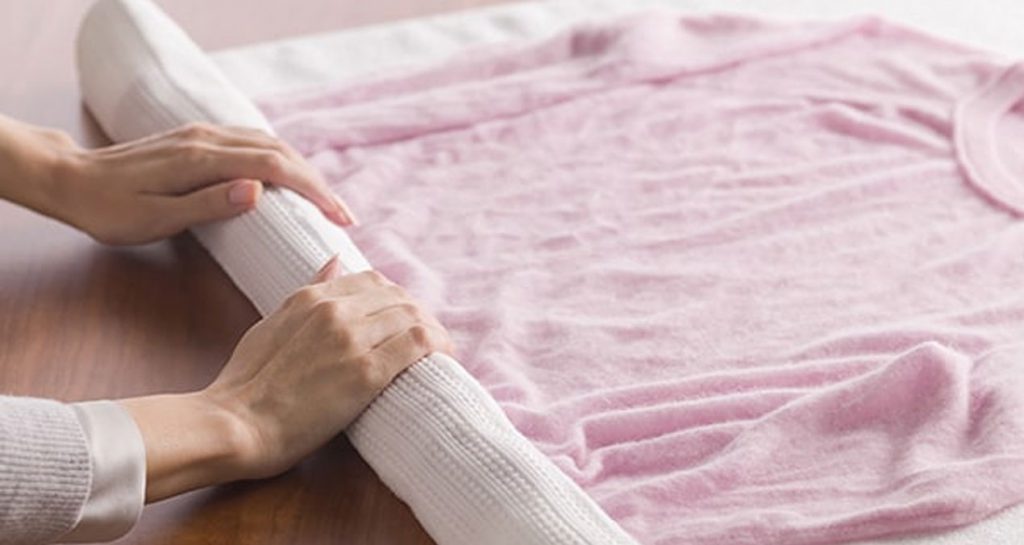
Nothing lasts long if not cared for. Similar is the case for the luxe Cashmere wraps and shawls. One has to be overly conscious while handling the super delicate fibre. Here are a few tips on how to Keep your Cashmere wrap/scarf new
- Make sure you wash your Cashmere scarf/wrap/shawl in lukewarm water and a gentle Cashmere shampoo. Harsh detergents should be strictly avoided when it comes to the washing of delicate fibres like Cashmere
- Do not wring the product when you have to rinse it. Instead, just squeeze it between your two hands. Make sure clear water runs when you rinse it, and no traces of the shampoo are left.
- Do not hang a Cashmere wrap for drying. Let it air dry, flat on the ground, preferably on a clean, dry towel. Even if this process takes 3 or 4 days, do not compromise on drying it, lest it changes shapes and gets deformed.
- Do not place your iron on the shawl/scarf directly. Instead, place a cotton cloth in between the iron and the shawl/scarf. It is much better if you invest in a vertical steam iron that does not touch the surface of your luxury wrap.
- Store a Cashmere wrap/scarf in a dry, clean, moisture-free place. Moisture is the worst enemy of Cashmere and hence should be avoided at all costs.
- Cashmere should not be worn on a daily basis to avoid bobbling. Bobbling is common in natural fabrics like Cashmere, but can be avoided if wear and tear are reduced.
Conclusion
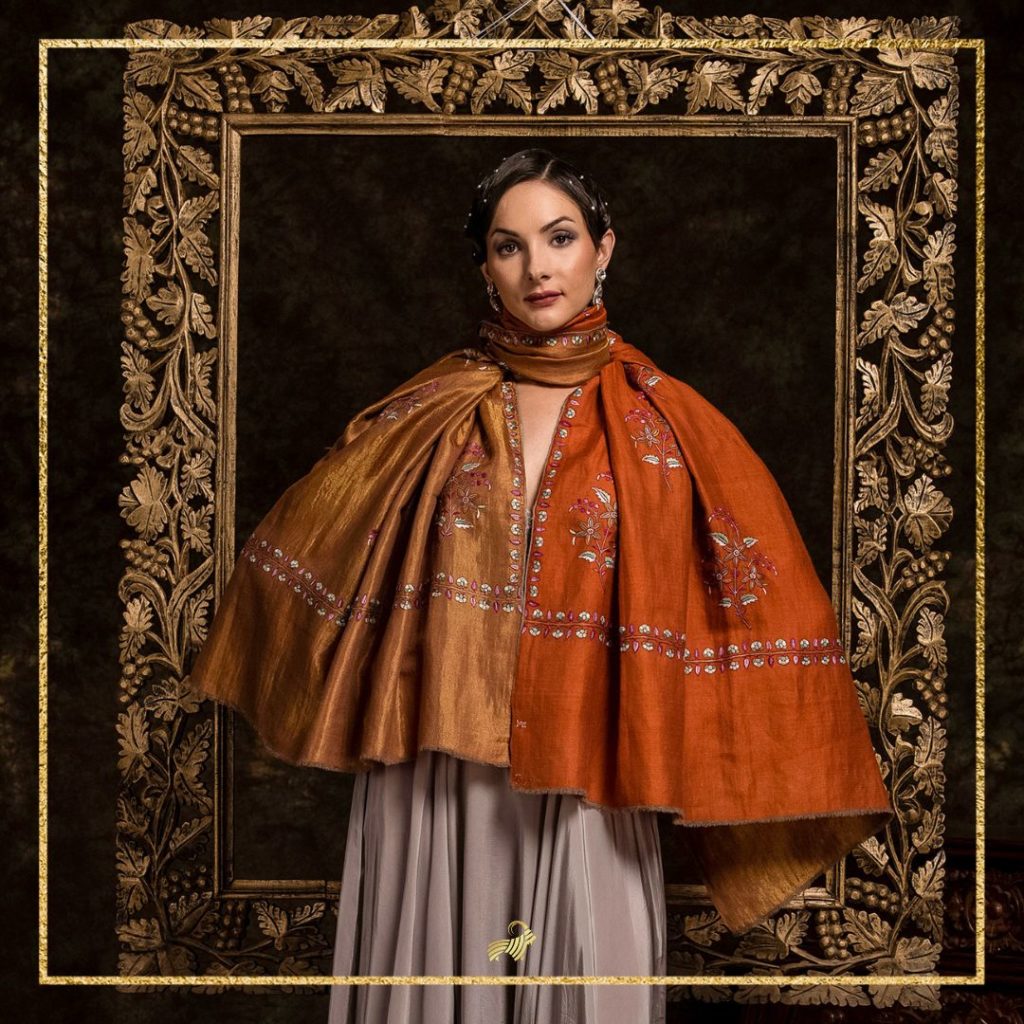
Cashmere wraps have been famous and in high demand since the 18th century when European royalty was swept off their feet on their first experience. But it was Empress Josephine who set these to a timeless fashion when she wore the Kani patterned Cashmere wrap for the first time. Since the Empress was a fashion icon, the demand for Cashmere knew no bounds. And this has been the case since then, exactly till now. The current times just made Cashmere adapt to its trendy fashion fads, but the timelessness never made it compromise on the base fabric. It was, and is, an ageless accessory for those who are fond of classic pieces.
Cashmere is a luxury to have. And luckily this luxury lasts for decades. Even if a Shawl is 20 years old, it looks quite graceful - like an heirloom treasure. Hence, with proper care and handling of your Cashmere scarf, you can preserve the same for yourself and generations to come.
Also read: 20 MOST ASKED QUESTIONS ABOUT PASHMINA AND CASHMERE